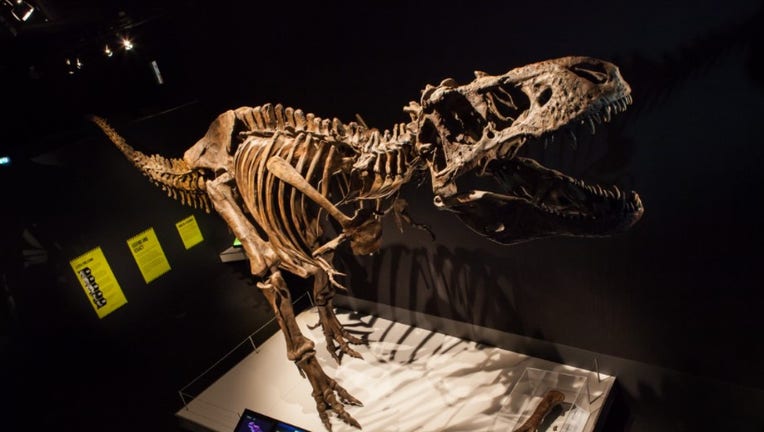Animals display a variety of gaits and walking speeds. It is commonly assumed that they minimize locomotor energy expenditure by selecting gait kinematics tuned to the natural frequencies of relevant body parts. In a new study, Pasha van Bijlert, a researcher at the Vrije Universiteit Amsterdam and Naturalis Biodiversity Center, and his colleagues demonstrated that this allows estimation of the preferred step frequency and walking speed of Tyrannosaurus rex.
The skeleton of Trix. Image credit: Mike Bink.
“There were already some studies investigating dinosaur walking speed, but they mostly looked at the legs and ignored the tail — which is what makes dinos so unique,” Van Bijlert said.
“They usually found much higher walking speeds. The one we calculated is lower, but it’s similar to that of other animals.”
Tyrannosaurus rex was one of the largest carnivorous dinosaurs to ever roam the Earth.
The ancient animal lived in the forested river valleys of western North America between 68 and 66 million years ago (Late Cretaceous epoch).
It measured an average of 12 m long and 4.5 to 6 tall, had large jaws and serrated teeth.
Tyrannosaurus rex didn’t just have two legs, it also had an enormous tail that helped it move around.
Like the bones in our necks, the bones in tails are held together by ligaments.
“You could compare it with a suspension bridge. A suspension bridge with a ton of muscle in it,” Van Bijlert said.
“Every step the tail swings up and down. That means that like the swing, it has a natural frequency at which it resonates.”
To find out what that frequency is, Van Bijlert and co-authors built a 3D model of Trix, an individual of Tyrannosaurus rex on display at the Dutch National Museum of Natural History, Naturalis.
The paleontologists added digital muscles to the famous skeleton, and on this muscular model they could perform biomechanical analyses.
They determined the tail natural frequency of Tyrannosaurus rex (0.66 times/s, range 0.41-0.84), and the walking speed (1.28 m/s, range 0.8-1.64).
“Our results for preferred walking speed of Tyrannosaurus rex are lower than previous estimations for large theropods, but more closely match the preferred walking speeds of a variety of extant animals, regardless of gait pattern and body size,” they said.
Source: sci.news












